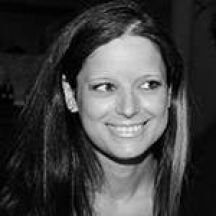Ever since its invention back in the 18th century, photography has been documenting life. At the same time, it focuses on inviting audiences to a rather subjective world while trying to be taken seriously as an art form. Photography has always been considered a male dominated profession, but luckily things are changing. Scholars, writers, bloggers, photography students and enthusiasts have been giving due to the female pioneers of the field. Most of them were always standing and/or hiding in the shadows, oblivious to how much they could acclaim and accomplish. Arguably, the technique, concepts and themes female photographers use, differ from those of male photographers. When most women were convinced that their place was in the kitchen and certainly not in the dark room, there were those who were struggling to surpass their male counterparts and work towards gaining respect and recognition for their work.
I wouldn’t have bothered to take the photograph unless I liked it.

Marti Friedlande
r (New Zealand photographer, 1928-2016) was known for photographing and documenting New Zealand’s people, places and events, and was considered one of the country’s best photographers. She was born in London, won a scholarship at the age of 14 and attended Camberwell School of Art, where she studied photography. From 1946 to 1957 she worked as an assistant to fashion photographers Douglas Glass, an expatriate New Zealander, and Gordon Crocker. She married in 1957 and emigrated to New Zealand with her husband in 1958. She first began taking photographs to document and understand the country and people around her, since New Zealand was very conservative compared to the London lifestyle. In 1964 she began working as a freelance photographer, and in 1972 her work became well known through her collaboration with social historian Michael King, photographing Maori women and their traditional moko tattoos. Friedlander’s photography career lasted over 40 years and her subjects have been diverse; portraiture, rural, urban and suburban scenes and encounters, both in New Zealand and other places in which she has lived or visited, such as Israel, Fiji, Tokelau and England. Her work has been published in books, magazines and newspapers and she held exhibitions at a number of galleries. Friedlander’s photography has always been about an involvement and extension of a personal view of life, rather than a particular attention to the craft itself.

Emila Medková
(Czech photographer, 1928-1985) was one of the important exponents of the Czech art photography in the second half of the 20th century. Her work was influenced by surrealism and she produced intimate, yet oblique images of textures and suggestive patterns inscribed across the surfaces of her native city of Prague. Emila attended the class of landscape photographer Josef Ehm at a specialized photography school and soon joined a circle of young artists. Medková’s work reflects the rich and various currents running through the development of photographic art and surrealism both pre-war and post-war Czechoslovakia. One could not ignore the feminist revision of art history in Eastern Central Europe during that time and how Emila’s work focuses primarily on the way in which the ambiguity of her photographs moves between the formal values of modernist photography and the poetic obscure of surrealism. She developed a distinct visual language influenced by greatly different cultural contexts from those of both her male and female counterparts in the West.

Marie Šechtlová
(Czech photographer, 1928-2008) was one of the proponents of the “poetry of everyday” style. Born in Chomutov, Marie completed an apprenticeship in photography at a photographic studio in Tábor and began her photographic career in 1945. After her marriage to Josef Šechtl, she helped develop the family Šechtl & Voseček photographic studio until 1953, when it was nationalized by the communist government. In the late 1950’s, she became an art photographer. Together with her husband, she published a number of books, and produced many exhibitions, and also pioneered the use of large scale photographic prints for interior decoration. Together with her husband they were a team of art photographers, pioneering colour photography, but Marie in particular brought a feminine emotive element to their work. Šechtlová has won many photography awards and her artistic insight changed the human shape into art, with a result that was both natural and wonderful. The body shapes and shadows in her photographs are an analogy of the architectural and design lines that were in vogue during the 60’s. Another dimension of her creativity was the link with literature, especially poetry. She excelled in both photomontages and street photography. Marie’s candid photography, inspired by the work of Henri Cartier-Bresson, loses nothing in comparison with the work of other great photographers. She also created art portraits and nudes, back when nude photography was just fighting its way through socialistic prudishness.
We will continue talking about female names that left their mark in photography and about contemporary female photographers who are still to emerge. There are a lot of female photographers out there deserving of praise and we can only hope to cover as many of them as we can. Please, follow this space to find out more.
I photograph to document objective and subjective situations that I consider to be significant.






